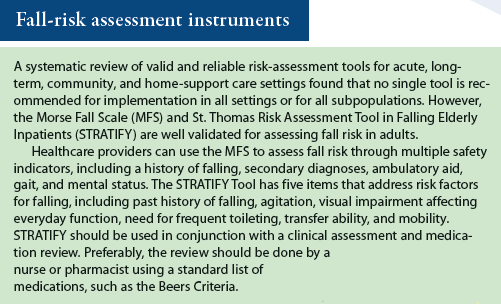More About Dementia Fall Risk
Table of ContentsDementia Fall Risk Can Be Fun For AnyoneDementia Fall Risk for DummiesThe Only Guide to Dementia Fall RiskThe Ultimate Guide To Dementia Fall Risk
A loss danger assessment checks to see just how most likely it is that you will drop. The evaluation usually consists of: This consists of a series of inquiries regarding your total health and wellness and if you have actually had previous drops or problems with balance, standing, and/or strolling.STEADI consists of testing, assessing, and treatment. Interventions are recommendations that might minimize your risk of dropping. STEADI includes 3 steps: you for your threat of succumbing to your risk aspects that can be improved to attempt to stop drops (for instance, equilibrium issues, impaired vision) to minimize your risk of dropping by making use of efficient strategies (for instance, providing education and learning and sources), you may be asked a number of inquiries including: Have you fallen in the previous year? Do you really feel unsteady when standing or walking? Are you stressed over falling?, your provider will certainly test your stamina, equilibrium, and gait, utilizing the following autumn analysis tools: This examination checks your gait.
If it takes you 12 secs or more, it might mean you are at greater threat for a loss. This examination checks stamina and equilibrium.
Relocate one foot halfway forward, so the instep is touching the big toe of your various other foot. Relocate one foot completely in front of the other, so the toes are touching the heel of your other foot.
Dementia Fall Risk - The Facts
Most falls take place as a result of several adding elements; consequently, handling the threat of falling begins with recognizing the factors that add to drop risk - Dementia Fall Risk. A few of one of the most relevant risk aspects consist of: History of prior fallsChronic clinical conditionsAcute illnessImpaired stride and equilibrium, lower extremity weaknessCognitive impairmentChanges in visionCertain high-risk medicines and polypharmacyEnvironmental variables can also boost the threat for drops, including: Inadequate lightingUneven or damaged flooringWet or slippery floorsMissing or damaged handrails and order barsDamaged or incorrectly fitted tools, such as beds, mobility devices, or walkersImproper use assistive devicesInadequate supervision of individuals staying in the NF, consisting of those that exhibit aggressive behaviorsA successful fall danger administration program calls for an extensive professional analysis, with input from all members of the interdisciplinary group

The care plan ought to additionally include interventions that are system-based, such as those that promote a safe setting (ideal lighting, hand rails, grab bars, and so on). The performance of the treatments need to be evaluated periodically, and the treatment strategy modified as needed to show modifications in the autumn risk assessment. Implementing a fall threat monitoring system making use of evidence-based ideal technique can lower the frequency of falls in the NF, while limiting the potential for fall-related injuries.
Dementia Fall Risk - Questions
The AGS/BGS guideline suggests evaluating all adults aged from this source 65 years and older for loss risk annually. This screening consists of asking individuals whether they have dropped 2 or more times in the previous year or sought clinical attention for an autumn, or, if they have not fallen, whether they feel unsteady when walking.
Individuals who have actually dropped when without injury should have their equilibrium and gait evaluated; those with gait or balance problems ought to obtain additional evaluation. A background of 1 fall without injury and without stride or equilibrium troubles Read More Here does not necessitate additional analysis past continued annual loss risk testing. Dementia Fall Risk. A loss risk evaluation is called for as part of the Welcome to Medicare assessment

Examine This Report on Dementia Fall Risk
Recording a drops history is one of the quality indicators for loss dig this avoidance and administration. Psychoactive medications in certain are independent predictors of falls.
Postural hypotension can typically be minimized by minimizing the dosage of blood pressurelowering medications and/or quiting medicines that have orthostatic hypotension as a negative effects. Use above-the-knee assistance hose pipe and copulating the head of the bed boosted may additionally lower postural reductions in blood pressure. The advisable aspects of a fall-focused physical exam are displayed in Box 1.

A pull time above or equal to 12 seconds recommends high loss risk. The 30-Second Chair Stand test assesses reduced extremity toughness and balance. Being not able to stand from a chair of knee elevation without making use of one's arms indicates boosted loss threat. The 4-Stage Balance test evaluates fixed equilibrium by having the person stand in 4 positions, each progressively a lot more difficult.